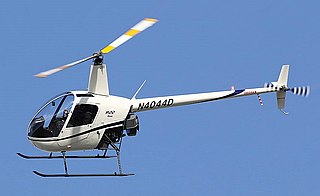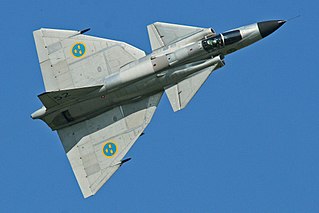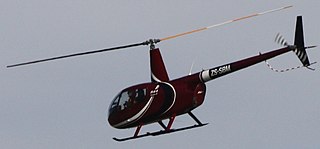
Aerodynamics is the study of the motion of air, particularly when affected by a solid object, such as an airplane wing. It involves topics covered in the field of fluid dynamics and its subfield of gas dynamics, and is an important domain of study in aeronautics. The term aerodynamics is often used synonymously with gas dynamics, the difference being that "gas dynamics" applies to the study of the motion of all gases, and is not limited to air. The formal study of aerodynamics began in the modern sense in the eighteenth century, although observations of fundamental concepts such as aerodynamic drag were recorded much earlier. Most of the early efforts in aerodynamics were directed toward achieving heavier-than-air flight, which was first demonstrated by Otto Lilienthal in 1891. Since then, the use of aerodynamics through mathematical analysis, empirical approximations, wind tunnel experimentation, and computer simulations has formed a rational basis for the development of heavier-than-air flight and a number of other technologies. Recent work in aerodynamics has focused on issues related to compressible flow, turbulence, and boundary layers and has become increasingly computational in nature.

A tiltrotor is an aircraft that generates lift and propulsion by way of one or more powered rotors mounted on rotating shafts or nacelles usually at the ends of a fixed wing. Almost all tiltrotors use a transverse rotor design, with a few exceptions that use other multirotor layouts.

Aeroelasticity is the branch of physics and engineering studying the interactions between the inertial, elastic, and aerodynamic forces occurring while an elastic body is exposed to a fluid flow. The study of aeroelasticity may be broadly classified into two fields: static aeroelasticity dealing with the static or steady state response of an elastic body to a fluid flow, and dynamic aeroelasticity dealing with the body's dynamic response.

Photogrammetry is the science and technology of obtaining reliable information about physical objects and the environment through the process of recording, measuring and interpreting photographic images and patterns of electromagnetic radiant imagery and other phenomena.
The Robinson Helicopter Company, based at Zamperini Field in Torrance, California, is a manufacturer of civilian helicopters. Robinson produces three models – the two-seat R22, the four-seat R44, both of which use Lycoming piston engines, and the five-seat R66, which uses a turbine engine.

The Robinson R22 is a two-seat, two-bladed, single-engined, light utility helicopter manufactured by Robinson Helicopter Company. It was designed in 1973 by Frank D. Robinson, and has been in production since 1979.

The Robinson R44 is a four-seat light helicopter produced by Robinson Helicopter Company since 1992. Based on the company's two-seat Robinson R22, the R44 features hydraulically assisted flight controls. It was first flown on 31 March 1990 and received FAA certification in December 1992, with the first delivery in February 1993.

The vortex ring state (VRS) is a dangerous aerodynamic condition that may arise in helicopter flight, when a vortex ring system engulfs the rotor, causing severe loss of lift. Often the term settling with power is used as a synonym, e.g., in Australia, the UK, and the USA, but not in Canada, which uses the latter term for a different phenomenon.

Franklin Davis Robinson was an American aeronautical engineer and the founder of Robinson Helicopter Company in Torrance, California. He served as president, chief executive officer, and chairman of the company for many years. In the early 1970s, Robinson designed the Robinson R22 helicopter, a popular, light, two-place civilian aircraft, which later developed into the R44, one of the most successful civilian helicopters in history.

On a helicopter, the main rotor or rotor system is the combination of several rotary wings with a control system, that generates the aerodynamic lift force that supports the weight of the helicopter, and the thrust that counteracts aerodynamic drag in forward flight. Each main rotor is mounted on a vertical mast over the top of the helicopter, as opposed to a helicopter tail rotor, which connects through a combination of drive shaft(s) and gearboxes along the tail boom. The blade pitch is typically controlled by the pilot using the helicopter flight controls. Helicopters are one example of rotary-wing aircraft (rotorcraft). The name is derived from the Greek words helix, helik-, meaning spiral; and pteron meaning wing.
Jennifer Murray is a pilot. In 2000 she circumnavigated the globe in a Robinson R44 helicopter, traveling 36,000 miles in 97 days, earning her the Guinness World Record for the first helicopter circumnavigation by a woman.

A helicopter is a type of rotorcraft in which lift and thrust are supplied by horizontally spinning rotors. This allows the helicopter to take off and land vertically, to hover, and to fly forward, backward and laterally. These attributes allow helicopters to be used in congested or isolated areas where fixed-wing aircraft and many forms of short take-off and landing (STOL) or short take-off and vertical landing (STOVL) aircraft cannot perform without a runway.

In aeronautics, a canard is a wing configuration in which a small forewing or foreplane is placed forward of the main wing of a fixed-wing aircraft or a weapon. The term "canard" may be used to describe the aircraft itself, the wing configuration, or the foreplane. Canard wings are also extensively used in guided missiles and smart bombs.

The Enstrom F-28 and 280 are a family of small, light piston engine powered helicopters produced by the Enstrom Helicopter Corporation.

Mercedes Reaves is a Puerto Rican research engineer and scientist. She is responsible for the design of a viable full-scale solar sail and the development and testing of a scale model solar sail at NASA Langley Research Center in Virginia.

The Robinson R66 is a helicopter designed and built by Robinson Helicopter Company. It has five seats, a separate cargo compartment and is powered by a Rolls-Royce RR300 turboshaft engine. The R66 is slightly faster and smoother than the Robinson R44 from which it is derived. The R66 received both type and production certificates from the U.S. Federal Aviation Administration (FAA) on October 25, 2010.

The Composite Helicopters International KC 518 Adventourer is a composite fuselage, 5-6 place turbine kit helicopter.

The DART 280 is a four-seat light-single piston-engined helicopter concept by Austrian Diamond Aircraft.

Mikhail Rostislavovich Farikh was a private helicopter pilot and the first Russian to go around the world by helicopter and to reach the North Pole. He held world records in helicopter competitions. He helped popularize light aviation and was a prominent activist in the world of Russian GA. He was also an active member of the aviation organization AOPA Russia.

On the 5th of March, 2021, a Robinson R44 helicopter crashed in the outskirts of Xumabee near Sojwe in Botswana. There were two people onboard the R44: The pilot, Leonard Matenje, director for Air Technology Services, treasurer of Professional Hunters Association and the Botswana Wildlife Producers Association, who survived, and Sasa Klaas, a Motswana musician, who died at the scene.

















